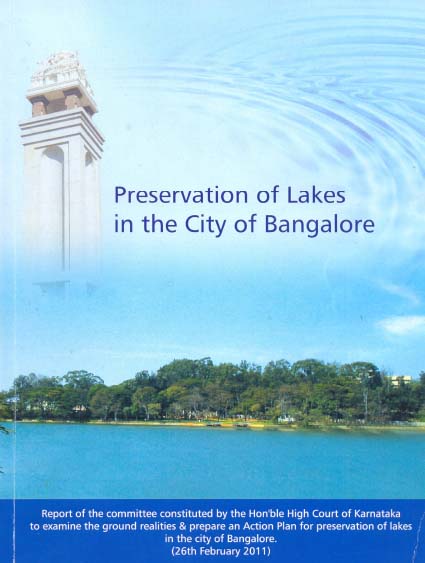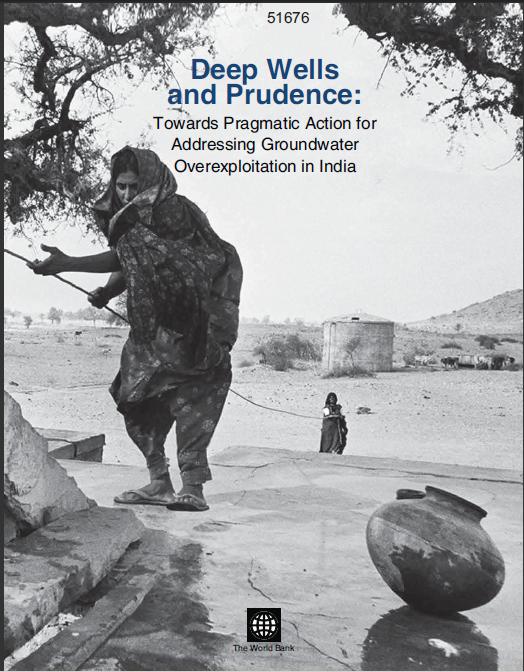Urban Water
Assessing acute Gastroenteritis risks associated with water quality and sanitation in Hyderabad city - A paper by the Institute of Health Systems (IHS)
Posted on 19 Apr, 2011 11:35 PMThe quality of drinking water is a vital element of public health and well-being. The most effective means of consistently ensuring the safety of a drinking-water supply is through the use of a comprehensive risk assessment and risk management approach that encompasses all steps in water supply from catchment to consumer.
WHO guidelines on water quality term these approaches as water safety plans (WSPs), developed to organize, systematize and apply management practices in drinking-water quality.
Bhisti community in Kolkata usurped by taps - A film from Video Volunteers
Posted on 18 Apr, 2011 12:15 PM
Landmark initiative of Karnataka High Court stops the destruction and degeneration of lakes of Bangalore – ESG's submission and the report of the Committee constituted by the Court
Posted on 15 Apr, 2011 11:33 AM The Hon'ble High Court of Karnataka in a recent landmark ruling (March 2011) accepted the report of the Karnataka High Court Legal Services Committee, which was constituted by it to examine the ground realities and prepare an action plan for the preservation of lakes in the city of Bangalore.
The Hon'ble High Court of Karnataka in a recent landmark ruling (March 2011) accepted the report of the Karnataka High Court Legal Services Committee, which was constituted by it to examine the ground realities and prepare an action plan for the preservation of lakes in the city of Bangalore.
The issue dates back to 2008 when the Environment Support Group (ESG) filed a Public Interest Litigation challenging the privatisation of lakes in Bangalore by the Lake Development Authority. There were two key prayers in the PIL.
One was seeking "necessary directions directing (the Government) to frame a scheme for the effective administration of lakes and tanks in consonance with the Principle of Intergenerational Equity and Public Trust Doctrine, in line with the recommendations of the Lakshman Rau Committee and also in conformance with principles for wetland conservation and management as laid down by the Union Ministry of Environment and Forests".
Death of a river - On the Yamuna in Delhi - Article from Kafila
Posted on 15 Apr, 2011 08:52 AMThis was first presented as a paper in a seminar on “The River” organised by the Max Muller Bhawan on 11 and 12 December 2010. Photo credits: Gigi Mon Scaria, Himanshu Joshi and Sohail Hashmi.
Urban lakes - A series of current articles from Down To Earth magazine
Posted on 14 Apr, 2011 07:11 PMDelhi
On June 7, 2000, the Delhi Jal Board and the Municipal Corporation announcement that they would create 150 ponds for rainwater harvesting. TAPAS, a non-governmental organisation, approached the Delhi High Court on June 22, 2000, to force government authorities to improve water availability and quality in the national capital. It sought restoration of neglected lakes and depressions in the city as well as the implementation of the announcement made by the authorities.
Hyderabad
The Andhra Pradesh High Court is hearing three different public interest petitions to protect the Hussainsagar lake. One seeks to prevent construction on or around the lake or its catchment area. Another aims to prevent heavy siltation due to annual immersion of idols in the lake during religious occasions.
Wastewater reuse in apartment buildings in Bangalore - S Vishwanath
Posted on 14 Apr, 2011 10:12 AMEven if an apartment uses as less as 5000 litres of water a day it must have a wastewater recycling system which does such a thorough job that the treated wastewater is reused to replace fresh water and not for simply disposing off into the environment in a safe way. It is simply not good enough for treated wastewater to be used for watering lawns, an unnecessary demand.
Dissemination of NDM-1 positive bacteria in the New Delhi environment and its implications for human health - An environmental point prevalence study published in The Lancet Infectious Diseases (2011)
Posted on 13 Apr, 2011 03:15 PMPlasmid-encoding Carbapenemase-resistant Metallo-B-Lactamase (PCM or NDM-1) is an enzyme that makes bacteria resistant, not only to a broad range of antibiotics such as carbapenems and other β-lactam, but also to multiple other antibiotic classes, leaving very few treatment options available, when a person gets infected with such bacteria.
Deep wells and prudence - Towards pragmatic action for addressing groundwater overexploitation in India - A World Bank document (2010)
Posted on 12 Apr, 2011 01:51 AM India is the largest user of groundwater resources in the world. It is estimated that approximately 230 cubic kilometers per year is used annually, this is more than a quarter of the total world consumption from this resource.
India is the largest user of groundwater resources in the world. It is estimated that approximately 230 cubic kilometers per year is used annually, this is more than a quarter of the total world consumption from this resource.
It is in this context that this World Bank report looks at the reasons for this quantum of groundwater usage.
The report delves into socio-economic and political reasons and looks at policies which inadvertently promote so much extraction. The report also analyses various attempts to manage this resource. These attempts range from government and international agency efforts directed to grassroots mobilisations. Finally the report comes out with suggestions to deal with this crisis.
Groundwater use in Aurangabad – A survey and analysis of social significance and policy implications for a medium-sized Indian city by GW MATE and World Bank (2008)
Posted on 12 Apr, 2011 01:17 AMAurangabad, a city in central Maharashtra is in a drought prone region, and being a rapidly urbanising town, is facing a lot of pressure on ots water resources. Besides importing water there has been an increasing trend of ground water extraction.
In this context, a survey of groundwater use was conducted as part of a World Bank study on Indian groundwater management. The study was a collaboration between GW MATE(Groundwater Management Advisory Team) and GRASP (Grass Roots Action for Social Participation), an Aurangabad-based civil society organization working on community-based natural resource management.



